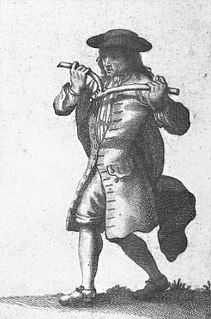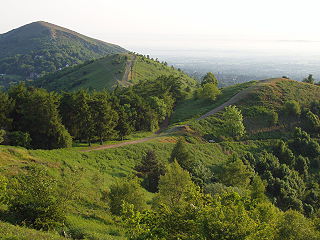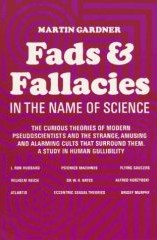Related Research Articles
Cryptozoology is a pseudoscience and subculture that searches for and studies unknown, legendary, or extinct animals whose present existence is disputed or unsubstantiated, particularly those popular in folklore, such as Bigfoot, the Loch Ness Monster, Yeti, the chupacabra, the Jersey Devil, or the Mokele-mbembe. Cryptozoologists refer to these entities as cryptids, a term coined by the subculture. Because it does not follow the scientific method, cryptozoology is considered a pseudoscience by mainstream science: it is neither a branch of zoology nor of folklore studies. It was originally founded in the 1950s by zoologists Bernard Heuvelmans and Ivan T. Sanderson.
Pseudoscience consists of statements, beliefs, or practices that claim to be both scientific and factual but are incompatible with the scientific method. Pseudoscience is often characterized by contradictory, exaggerated or unfalsifiable claims; reliance on confirmation bias rather than rigorous attempts at refutation; lack of openness to evaluation by other experts; absence of systematic practices when developing hypotheses; and continued adherence long after the pseudoscientific hypotheses have been experimentally discredited.

Dowsing is a type of divination employed in attempts to locate ground water, buried metals or ores, gemstones, oil, claimed radiations (radiesthesia), gravesites, malign 'earth vibrations' and many other objects and materials without the use of a scientific apparatus. It is also known as divining ), doodlebugging or water finding, or water witching.

Ley lines are straight alignments drawn between various historic structures and prominent landmarks. The idea was developed in early 20th-century Europe, with ley line believers arguing that these alignments were recognised by ancient societies that deliberately erected structures along them. Since the 1960s, members of the Earth Mysteries movement and other esoteric traditions have commonly believed that such ley lines demarcate "earth energies" and serve as guides for alien spacecraft. Archaeologists and scientists regard ley lines as an example of pseudo-archaeology and pseudo-science.

Edward Russel Dewey (1895–1978) was an economist who studied cycles in economics and other fields.
Pyramid power refers to the belief that the ancient Egyptian pyramids and objects of similar shape can confer a variety of benefits. Among these assumed properties are the ability to preserve foods, sharpen or maintain the sharpness of razor blades, improve health, function "as a thought-form incubator", trigger sexual urges, and cause other effects. Such unverified conjectures regarding pyramids are collectively known as pyramidology.
In philosophy of science and epistemology, the demarcation problem is the question of how to distinguish between science and non-science. It examines the boundaries between science, pseudoscience, and other products of human activity, like art and literature, and beliefs. The debate continues after over two millennia of dialogue among philosophers of science and scientists in various fields. The debate has consequences for what can be called "scientific" in fields such as education and public policy.
Tromp is a Dutch occupational surname thought to be derived from trompet(ter), trumpet (player), or sometimes trommelaar, drummer.

Fads and Fallacies in the Name of Science (1957)—originally published in 1952 as In the Name of Science: An Entertaining Survey of the High Priests and Cultists of Science, Past and Present—was Martin Gardner's second book. A survey of what it described as pseudosciences and cult beliefs, it became a founding document in the nascent scientific skepticism movement. Michael Shermer said of it: "Modern skepticism has developed into a science-based movement, beginning with Martin Gardner's 1952 classic".

The Odic force is the name given in the mid-19th century to a hypothetical vital energy or life force by Baron Carl von Reichenbach. Von Reichenbach coined the name from that of the Norse god Odin in 1845.
Manfred Curry was a physician, inventor, sailor and author of American citizenship. He was born in Munich, Germany; his father Charles American and his mother Adele Russian.

Radionics—also called electromagnetic therapy (EMT) and the Abrams Method—is a form of alternative medicine that claims that disease can be diagnosed and treated by applying electromagnetic radiation (EMR), such as radio waves, to the body from an electrically powered device. It is similar to magnet therapy, which also applies EMR to the body but uses a magnet that generates a static electromagnetic field.

The Society for Scientific Exploration, or SSE, is a group committed to studying fringe science. The opinions of the organization in regard to what are the proper limits of scientific exploration are often at odds with those of mainstream science. Critics argue that the SSE is devoted to disreputable ideas far outside the scientific mainstream.

Psychic archaeology is a loose collection of practices involving the application of paranormal phenomena to problems in archaeology. It is not considered part of mainstream archaeology, or taught in academic institutions. It is difficult to test scientifically, since archaeological sites are relatively abundant, and all of its verified predictions could have been made via educated guesses.
Robert J. (Bob) Schadewald was an author, researcher, and former president of the National Center for Science Education (NCSE). An internationally recognized expert on pseudoscience, Schadewald penned numerous articles on creationism, perpetual motion, flat earthism, and other pseudoscience for such magazines as Science 80, Technology Illustrated, Smithsonian, and Science Digest.

The Comité Para, in full Comité belge pour l'Analyse Critique des parasciences, is a Francophone Belgian skeptical non-profit organisation. Founded in 1949, the Comité Para regards itself as the originator of the modern skeptical movement. The group's motto is Ne rien nier a priori, ne rien affirmer sans preuve.

Joseph Cecil Maby (1902-1971) was a British biophysicist, dowser and psychical researcher.
Elisabeth Boyko was an Austrian-Israeli botanist noted for pioneering the use of salt water for irrigation of desert plants in Israel, alongside her husband Hugo Boyko. She received the William F. Petersen Award from the International Society of Biometeorology.
Geobiology is a term used to describe a study of the effects of the Earth's radiation i.e. telluric currents and other electromagentic fields upon biological life e.g. human, animal and plant.
Radiesthesia describes an ability to detect radiation emitted by a person, animal, object or geographical feature. There is no scientific evidence of the existence of this pseudoscientific or occult phenomenon.
References
- ↑ Krasnow, Shelley; Plasterk, K. J. (1984). In memoriam Dr. Solco Walle Tromp 9 March 1909–17 March 1983. International Journal of Biometeorology . Volume 28, Issue 4, pp. 257-260.
- ↑ Williams, William F. (2000). Encyclopedia of Pseudoscience: From Alien Abductions to Zone Therapy . Facts on File Inc. p. 294. ISBN 1-57958-207-9
- ↑ Gardner, Martin. (2012 edition, originally published in 1957). Fads and Fallacies in the Name of Science . Dover Publications. pp. 103-106. ISBN 0-486-20394-8